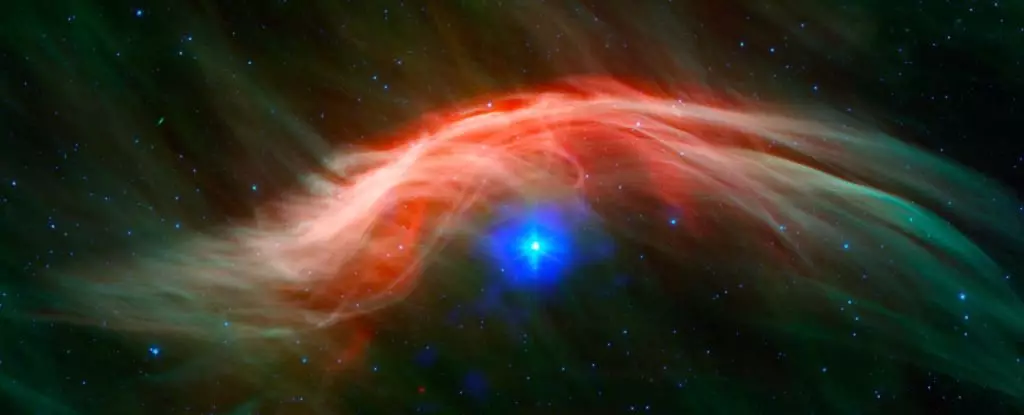The universe is a vast expanse of interconnected phenomena, and recent research suggests that even the most distant cosmic events can have tangible effects on life on Earth. A particularly intriguing study led by astrophysicist Caitlyn Nojiri from the University of California, Santa Cruz, proposes a remarkable correlation between a supernova explosion and an outburst of viral diversity in Lake Tanganyika around 2.5 million years ago. This raises profound questions regarding the intersection of astrophysics and biology: How do cosmic events alter the evolutionary tapestry on our planet?
The background of this inquiry lies in the Local Bubble, an area of space that houses our Solar System, which is relatively sparse in star density. This region is believed to have been shaped by a series of supernovae that occurred millions of years ago, resulting in an environment where cosmic radiation levels can fluctuate dramatically. The study specifically investigates cosmic rays and their potential role in driving evolutionary changes on Earth through mutation—a necessary element of natural selection.
A crucial aspect of Nojiri’s research involves the analysis of deep-sea sediment cores, which offer a historical record of Earth’s interactions with cosmic events. The focus is on iron-60, a radioactive isotope produced during supernova explosions. When the Earth traverses remnants of these explosions, increased concentrations of iron-60 can signify a major cosmic event. Nojiri’s team examined two notable spikes of iron-60 found in seafloor sediments, one dating back approximately 6.5 to 8.7 million years and the other between 1.5 and 3.2 million years ago.
The researchers reconstructed Earth’s path through space to identify the sources of these iron-60 spikes. Their analyses indicated that the later spike likely coincided with a nearby supernova explosion in either the Scorpius-Centaurus or Tucana-Horologium star groups. Noteworthy is the suggestion that the cosmic radiation resulting from this explosion could have permeated Earth for tens of thousands of years, bathing the planet in potentially transformative radiation levels.
Radiation has long been understood as a catalyst for genetic mutations in living organisms. While evolution would persist without such external influences, cosmic radiation may provide an additional push for rapid diversification. In this context, Nojiri’s research opens the door to a fresh perspective on how life might adapt in response to dramatic shifts in environmental conditions triggered by cosmic phenomena.
A groundbreaking 2016 study indicated that radiation levels capable of breaking DNA strands could be as low as 5 milligrays per year—prompting speculation about how the supernova’s radiation exposure could have affected life forms. The implications of such a connection are profound. The increase in viral diversity in Lake Tanganyika during the same period suggests that these cosmic events could have ripple effects throughout ecosystems beyond mere radiation exposure.
Historically, discussions about evolution have predominantly centered on terrestrial factors such as climate change, geological activity, and biological competition. However, the notion that cosmic events could intermingle with these processes challenges the anthropocentric view of evolution. If significant transformations in life could arise from stellar explosions millions of light-years away, it invites a reevaluation of our understanding of life’s development.
This perspective echoes the sentiment expressed famously by Carl Sagan—“We are all stardust.” It compels us to consider the continuity between the cosmos and our existence on Earth. The delicate dance between celestial events and life’s evolution nudges us to ponder our place within the universe at large.
The findings of Nojiri and her colleagues serve as a poignant reminder that the cosmos may not be as distant from our daily lives as we often presume. By recognizing that events happening light-years away can influence life on Earth, we are encouraged to adopt a holistic perspective on evolution and existence itself. As we advance in our understanding of cosmic phenomena, we may yet uncover more connections between humanity and the universe—fostering a better appreciation for the intricate web of life that encompasses us. In acknowledging the potential impacts of our galactic surroundings, we enhance our comprehension of evolution’s complex pathways, from the minutiae of microbial life to the grand tapestry of biodiversity on this planet we call home.


Leave a Reply